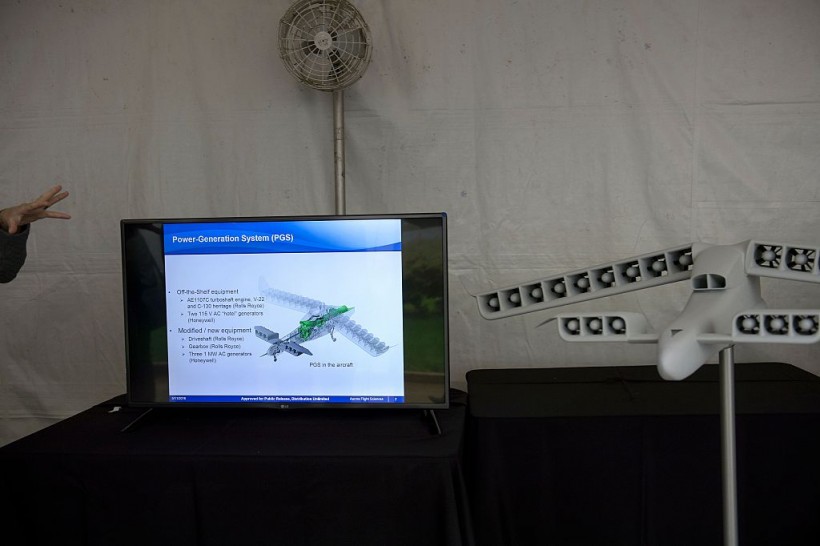The Defense Advanced Research Projects Agency (DARPA) will start a detailed design phase of its Control of Revolutionary Aircraft with Novel Effectors (CRANE) program, according to a press release.

(Photo : BRENDAN SMIALOWSKI/AFP via Getty Images)
A model of a vertical takeoff aircraft is seen during the Defense Advanced Research Projects Agency (DARPA) Demo Day at The Pentagon on May 11, 2016 in Washington, DC. /
DARPA chose Aurora Flight Sciences for this following the successful completion of the project's Phase 1 preliminary design. This resulted in an innovative testbed aircraft that used Active Flow Control (AFC) that can generate control forces in a wind tunnel test.
Now, the project has moved to Phase 2, focusing on the detailed design and development of flight software and controls. This phase will culminate an important desire review of an X-plane demo that can fly without traditional moving flight controls on the wings and tail's exterior.
Their contract will also include a Phase 3 option. The third phase will fly a 7,000-pound X-plane that will address two primary technical hurdles of incorporating AFC into a full-scale aircraft and reliance on it for controlled flight.
Unique Features are Coming
The demo aircraft will have unique features with modular wing configurations. These will allow for the future integration of advanced technologies for flight testing by DARPA or other transition partners.
The AFC suite of technologies will allow for several opportunities for aircraft performance improvements. These will include the elimination of moving control surfaces, high angle of attack flight, thicker wings, increased fuel capacity, and drag reduction.
While present-day aircraft are designed for optimum performance at a specific speed and altitude, AFC could allow for the best flight performance at any speed and altitude.
This would allow for the optimization of the aircraft's control forces and eliminate the need for control surfaces and high-power actuators to actively modify aerodynamic performance actively actively, hence improving the efficiency of the aircraft.
This will be a major leap in aviation and allow for the safe and efficient operation of the high-speed, long-range, highly maneuverable aircraft that have become increasingly common among military and commercial fleets worldwide.
Also read: DARPA Wants To Use Genetically Engineered Organisms To Make Mars More Earth-Like
These will make it easier to fly an aircraft without a pilot to operate the flight controls and without any mechanical moving controls such as ailerons and rudders.
Also, the use of non-moving control surfaces could reduce the aircraft's weight by almost 10 percent and decrease fuel consumption. It could also make future aircraft safer.
With all the lofty goals, this research by DARPA promises to revolutionize flight and will take the technology of Active Flow Control to the next level.
DARPA is becoming more and more innovative. With this, they are giving wings to new and unique ideas as they have done with other projects like the Gremlins and Warp Drive.
Thanks to modern technology and developments, we will soon be able to see many new and unique things in the future.
Related article: DARPA Successfully Flew a Black Hawk Helicopter using 'ALIAS' without Any Pilot-Self-Flying Missions Soon?










